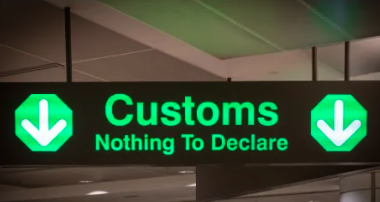Certificate of Origins, EUR.1 Documents, ATR Documents and T2/T2L/T2LF: Understanding Customs Origin Documentation
In international trade, customs origin documents play a vital role in determining the origin of goods for various purposes including trade agreements, tariffs, and taxation. Three key documents commonly used for this purpose are the Certificate of Origin, EUR.1 Document, and ATR Document. Each serves a specific function and is essential for facilitating smooth trade transactions between countries.
1. Certificate of Origin:
A Certificate of Origin (CO) is a document issued by an authorized body, such as a chamber of commerce or a government agency, certifying the country of origin of goods being exported. It serves as evidence that the goods originate from a specific country and may be required by customs authorities to determine applicable tariffs, preferential trade agreements, or to ensure compliance with import regulations.
The Certificate of Origin typically contains information such as the exporter’s details, the importer’s details, description of the goods, their value, and the country of origin. It may need to be notarized or authenticated by relevant authorities depending on the requirements of the importing country or trade agreement.
2. EUR.1 Document:
The EUR.1 Document is a specific type of certificate of origin used in trade between the European Union (EU) and certain partner countries that have a preferential trade agreement with the EU. It allows exporters to claim preferential tariff treatment for their goods based on the rules of origin outlined in the trade agreement.
To qualify for preferential tariffs under agreements such as the EU’s Generalized System of Preferences (GSP) or Free Trade Agreements (FTAs), exporters must obtain an EUR.1 Document from the customs authorities in their exporting country. This document certifies that the goods meet the required origin criteria specified in the trade agreement.
3. ATR Document:
The ATR Document is used in trade between European Union (EU) member states and Turkey, facilitating preferential trade arrangements between these parties. ATR stands for “Admission Temporaire – Temporary Admission,” referring to the temporary admission of goods with preferential tariff treatment.
Similar to the EUR.1 Document, the ATR Document enables exporters to claim preferential tariff treatment for their goods when exporting to Turkey or importing from Turkey into EU member states. It certifies that the goods originate in the EU or Turkey, depending on the direction of trade, and meet the necessary origin criteria outlined in the Turkey-EU Customs Union Agreement.
4. T2 Document
The T2 document, or internal transit, is used for transporting Union goods between two locations within the EU customs union while passing through a non-EU territory. This document maintains the status of Union goods throughout the transit, ensuring that they are not subjected to customs duties or import procedures while in transit. For instance, a truck carrying Union goods from Germany to Spain via Switzerland would use a T2 document to demonstrate its Union goods status to the relevant EU customs authorities.
5. T2L Document
The T2L document is specifically designed for sea transport of Union goods within the EU customs territory. It serves as proof of the Union goods status of the goods being transported by sea from one location to another within the EU. For example, goods loaded onto a vessel in Rotterdam with the destination of Dublin would require a T2L document to demonstrate to the Irish customs department that the goods on board are Union goods.
6. T2LF Document
Similar to the T2L document, the T2LF document is used for sea transport of Union goods within the EU customs territory. However, it is specifically required when the destination does not fall under the VAT Directive 2006/112/EG. For instance, when Union goods are loaded onto a vessel in Rotterdam with the final destination of the Canary Islands, a T2LF document would be necessary to indicate that the destination is not subject to VAT regulations under the EU directive.
In conclusion, Certificate of Origin, EUR.1 Document, ATR Document and the T2 Documents are crucial customs origin documents that facilitate international trade by providing evidence of the origin of goods and enabling exporters to claim preferential tariff treatment under various trade agreements. Understanding and complying with the requirements of these documents are essential for smooth and efficient cross-border trade transactions.




